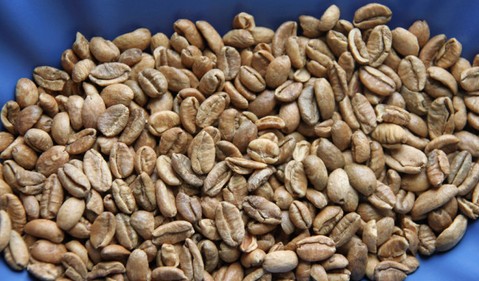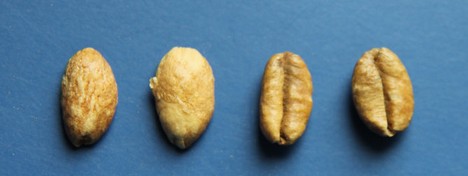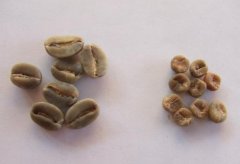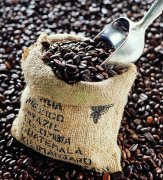Liberica coffee beans made in Hainan, China
Liberica coffee beans: large shrubs or small trees, 6-15 m tall; dark brown bark; branches spreading, hard and straight. Leaves opposite, leathery, elliptic or Obovate-elliptic, 15-30 cm long, apex mucronate, base broadly cuneate, margin entire, rarely microwave, often with small pores in lower vein axils; petiole 8-20 mm long; stipules broadly triangular, 3-4 mm long, tip obtuse, rarely convex. Cymes 2 to several clustered leaf axils or leaf scars of old branches, with very short involucral pedicels; bracts connate at base, usually 2 broadly ovate, apex truncate, other 2 striate or leaflike; calyx eaves parted or lobed; Corolla white, 2.5-3.2 cm long, distally enlarged, lobes 6-11, elliptic moment rounded, 16 mm long. Berries broadly oval, 19-21 mm long. Native to Africa, western Liberia; introduced and planted in Hainan and Yunnan. The use is the same as ordinary coffee.
The coffee below is produced in Hainan:

A hodgepodge of coffee and raw beans smells stinky!


Photo of Liberica coffee beans

The coffee fruit has been here for a long time. The fruit is a little bad.

One is the broken raw bean, the other is with endocarp.

(this article is reprinted)
Important Notice :
前街咖啡 FrontStreet Coffee has moved to new addredd:
FrontStreet Coffee Address: 315,Donghua East Road,GuangZhou
Tel:020 38364473
- Prev

Coffee variety introduction: Maui Moka (Maui Mokka)
There are two sources of Maui Mokka coffee varieties: one is the sudden mutation of the bourbon variety from the old bourbon island, and the other is the mocha variety transplanted in Yemen. The coffee tree is not tall, the leaves are small and slender, and the raw beans are small and orchard; it is easy to get rust spot and the yield is very low. Except for Maui, Hawaii, there is a small amount of cultivation in Brazil, although it is grown at a lower altitude.
- Next

Ten essential elements of fine coffee beans basic knowledge of coffee beans
1. Must be at least 90% coffee containing bourbon, Pacamara or Maragogipe, 100% fully ripe to red wine color 3, separate from other coffee in the manufacturing process, avoid mixing other poor coffee to ensure its good quality 4, wash 5% fresh water, 100% sun 6, pick fruits by hand and wash 7, be sure
Related
- Guji coffee producing area of Guji, Ethiopia: Humbela, Shakiso, Wulaga
- What is the most expensive variety of Qiloso in BOP multi-variety group?
- How to store the coffee beans bought home?
- Why are Yemeni coffee beans so rare now?
- Ethiopian Sidamo all Red Fruit Sun Sun Santa Vini Coffee beans
- SOE is mostly sour? What does it mean? Is it a single bean? what's the difference between it and Italian blending?
- Is Italian coffee beans suitable for making hand-brewed coffee?
- How to choose coffee beans when making cold coffee? What kind of coffee beans are suitable for making cold coffee?
- Just entered the pit to make coffee, what kind of coffee beans should be chosen?
- Can only Japan buy real Blue Mountain Coffee? What are authentic Jamaican Blue Mountain coffee beans?

